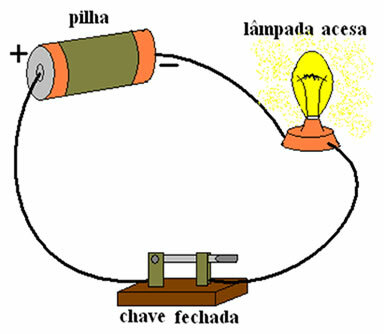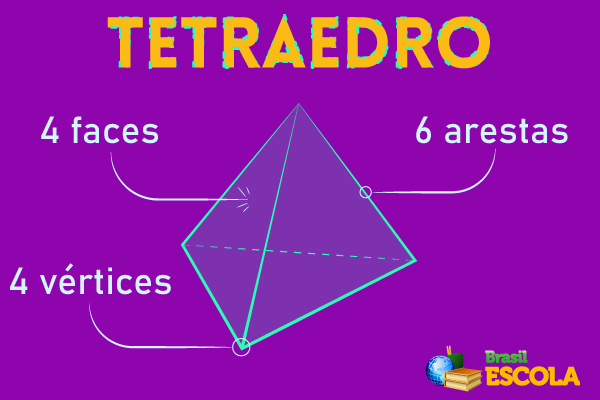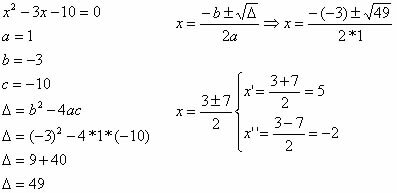Let's make the observation of figure 1 above, in it we have a very simple example of a simple circuit. In a very general way, we can say that a simple circuit is the one in which there is only a single electric current, that is, the electric current leaves the generator and travels only one way to return to it. We can see in the figure below that there is a battery, a lamp and a metallic key, connected by conducting wires.
According to the figure above, we see that the switch is off (or open). In this way, we see that the lamp does not light up, as there is no electric current passing through the circuit.
Looking at the figure below, we see that the switch is closed, so electrons can pass through the switch. As they move through the switch, we say that there is electrical current in the circuit, so the lamp turns on. Usually the switches and also the wires have a very small resistance, compared to resistances that appear in other circuits (in the figure, the lamp resistance).

Figure 2 - The lamp turns on when the switch is closed
Thus, the situations in the figures above are represented by the diagrams:

Diagram 1 and Diagram 2
As we know, lamp filaments are not ohmic conductors, that is, they do not have constant resistance. However, we often consider this resistance approximately constant and represent lamps as resistors.
Thus, the diagrams in the figure above could be represented as in this other illustration (figure below), where R is the resistance of the lamp.

Another representation of simple circuits
In both diagram 1 and diagram 2, we take into account the fact that the connecting wires and the switch have negligible resistance and thus are represented by straight lines. The switch used in homes is a type of switch that can interrupt or let electrical current pass through.
By Domitiano Marques
Graduated in Physics
Brazil School Team
Source: Brazil School - https://brasilescola.uol.com.br/fisica/circuito-simples.htm



